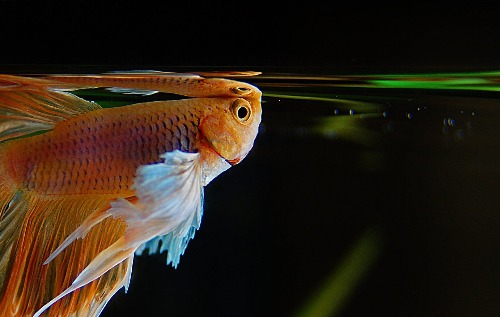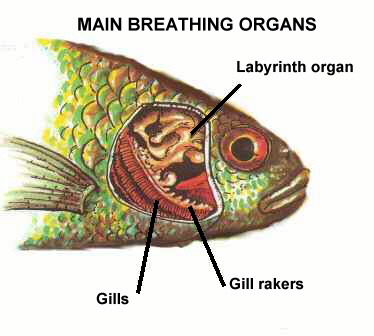How do Betta Fish Breathe?

Photo credit: Dan the Hutt
Betta fish, the dazzling jewels of the aquarium world, are fascinating for reasons beyond their vibrant colors and flowing fins. Unlike most fish, bettas possess a remarkable ability: they can breathe air directly from the surface. This unique feature influences everything from their behavior to how we should care for them.
The Secret to How Betta Fish Breathe: The Labyrinth Organ
Click here for the best way to aerate your tank

credit: Spread the betta love
The key to a betta’s air-breathing lies in the labyrinth organ, which is located above their gills. Imagine a miniature maze with thin, delicate tissues packed with blood vessels. When a betta breaks the surface, it gulps in the air, and these tissues extract oxygen like our lungs do! It’s an incredible adaptation that allows them to survive in environments other fish might find impossible.
An Evolutionary Advantage
Betta fish hail from Southeast Asia, inhabiting rice paddies, ditches, and shallow ponds. During dry seasons, these habitats can become hot, stagnant, and low in oxygen. The labyrinth organ gives bettas a lifeline, helping them thrive where other fish struggle. This same resilience is why bettas may tolerate less-than-ideal conditions in home aquariums, but it shouldn’t be an excuse for poor care.
Betta Bubble Nests: More Than Just Cute
Did you know those intricate floating bubble nests male bettas build have a vital purpose? These aren’t simply decorative – they’re cradles for their young! Male bettas blow saliva-coated air bubbles that form a sturdy raft at the surface. This ensures that the eggs and newly hatched fry always have access to air for breathing until they develop their labyrinth organs. It just goes to show how intertwined air-breathing is with the betta’s entire lifecycle.
Betta Care: Oxygen Myths and Must-Haves
Their air-gulping behavior sometimes leads to the misconception that bettas don’t need oxygen in their water. This is false! They still use their gills and require good water quality. Proper filtration for waste removal is essential. Avoid tall, narrow tanks with limited surface area for breathing. Wider, shallower tanks promote their natural behavior and health.

